Face it
Ahead of Liverpool, let's look at the recent lineup shakeups, build-up configurations, the loss of control in the second half against Shakhtar, Rice's usage and output, and more
“When it comes down to reacting against a difficult situation, don't feel sorry for ourselves. Face it. We are a team that we know how good we are, as well as how difficult we can be for the opponent. And having that ruthless mentality in the team is something that I love.”
— Mikel Arteta this week
Happy Saturday.
Let’s get right into it.
🤨 What happened at Bournemouth
The first 30 minutes of a match like Bournemouth will happily lend itself to overanalysis.
Facing a tough foe at their ground — Bournemouth are sixth in the league in expected goal difference as I write this — and without our primary creative forces — and with our own pragmatic manager at the helm — the initial stanza was always going to be a little cagey and tight. All we saw was the “settling-in” period. The game hadn’t really revealed itself yet.
Below, you’ll see how goals accumulate over the course of a match, with a sample from last year. Goals tend to tick up as players tire, advantages compound, risks are taken, and goals beget goals.
After Gameweek 8 of this campaign, the aggregate final score of Arsenal matches after 30 minutes is … 3-1.
But we can’t fully brush it aside. For Bournemouth, Arteta offered a midfield three of Declan Rice, Thomas Partey, and Mikel Merino. It was a fairly unexpected grouping, I gather. It felt heavy on physicality and experience, but potentially light on creativity and progression, especially notable in the stylistic difference between Merino and Ødegaard in the RCM spot.
Ethan Nwaneri went unused despite the calls from the gallery (it’s me, I’m the gallery). Martinelli’s full fitness was uncertain, which led to Trossard being switched out of the “Twin 10” thing he’s been doing with Havertz and onto the left wing. Sterling came on at right wing.
I have a few #takes on this all. The first is about lower build-up.
This section is mostly positive of late. Especially with Calafiori involved, I’ve liked what I’ve seen in the early phases from a distance, timing, pattern, and setup perspective.
It’s essentially been a double-pivot, anchored by Thomas Partey and paired with a modular partner. Any of Merino, Calafiori, or Rice could slot in next to him.
In this next look, Merino floats up high to threaten Bournemouth aerially with Havertz, so the midfield is reinforced with Calafiori starting to pinch in during a momentary rotation. Raya does some counting to decide whether to go long or short.
Because of that, it usually wasn’t difficult to find the free man in build-up. The twin threat of Havertz and Merino was too much for Bournemouth to leave the backline short.
Here, you’ll see it working. With Merino able to work high or low, he drops into the pivot here, which overloads the press. He’s the free man, and Sterling is eventually found in the kind of 1v1 you hope to manufacture.
It wasn’t perfect, but these were generally the situations the build-up was able to create, which is the whole point.
In the first 30 minutes, this Arsenal shape had:
More possession than usual (56.57% to 53.79%)
More forward passes than usual (48 to 39.1)
I don’t think Merino at RCM is a non-starter, especially as a defensive sub, as he can offer a lot of what Havertz can in that spot — with a touch less galloping and a touch more passing aggression and variety. It’s not his perfect or ideal position, and we haven’t really gotten to see his aerial work yet. Like everybody, he’ll look a lot better when Saka plays.
So where did things fall short?
Advanced actions.
Breaking news: Arsenal miss Saka and Ødegaard. As obvious as that is to say, it’s probably worth reflecting on the size of that void:
Last year, Ødegaard had 178 live-ball shot-creating actions, which led all of Europe’s top-five leagues.
It was 35 more than the second-highest player, Bruno Fernandes.
Third on that list was Bukayo Saka, with 137.
Including all types of SCA, Ødegaard and Saka combined for 408 in all. This was 85 more than the second-best duo in Europe, Florian Wirtz and Jonas Hofmann of Leverkusen.
In sum, this right pairing had +26% more than any tandem in top European competition.
We’ve been through a period of “Saka Games” wherein Saka showed why they were Saka Games, pumping in all-world numbers. In fairness to him, almost every game is a Saka Game, but he’s especially deadly if there’s a full-back matchup to exploit or he’s given the freedom to roam into the half-space.
On the other hand, these last two, against Bournemouth and Shakhtar, were quintessential Ødegaard games. The team needed calmness through the middle, intelligent manipulation of the press, and aggressive and immediate press coordination when out-of-possession. While the team sought to cope, there wasn’t that final level of polish that we’ve come to expect with Ødegaard on the pitch.
The team has suffered in the advanced security of the ball. In the first fifteen minutes against Bournemouth, the team went 0-for-12 in attacking duels.
Now, I watched these back, and they weren’t as simple as “Trossard couldn’t beat his man on the dribble.” A lot of this was about the risk-and-reward quotient that Saka and Ødegaard offer. They may lose the ball in advanced areas, but usually it’s when they are trying something, and not because they got shoved off. These losses were because of aggressive challenges from Bournemouth defenders, with Trossard and Sterling losing it while attempting to shield them away.
In general, the proximate issue with a lineup like this is that there aren’t enough players to move the block around. Sterling’s tape contained plenty of nuance. I would have kept him on after the red, and I think the team lost a coherent theory for how to get a goal for most of the match; it was too early for that.
This little post-corner opportunity shows why. These quick bursts of pace are too rare a sight in a Martinelliless lineup.
Which brings us to Trossard.
I gather that I’m not quite as negative about Trossard as a left-winger as many. This is not a boisterous endorsement of his overall play over there, but a more general point. You are starting him for his contribution to the scoresheet. He has had some great moments otherwise. The assist against PSG comes to mind. He’s taken his defensive responsibilities seriously. But wherever he starts, whenever he starts, however he starts, he essentially has a 60% chance of scoring a goal. Many of those goals are gravity-defying; they can come decoupled from how he plays on the day.
None of that is meant to discount his impact. Goals are the game.
Last year, that number was 0.64/90 when he started at left wing, even if his aggregate impact is higher through the middle. Here was his final stretch.
But there is a recurring little issue there, which we’ve mentioned since his initial scouting report. He can misjudge the reading and weighting of some of his backward (or sideways) passes in the build-up, usually in the medium length.
To give you a sense, here are the lifetime completion rates of backward passes amongst the players up front:
Ødegaard: 94.5%
Sterling: 94.3%
Merino: 93.5%
Havertz: 93.3%
Saka: 93.2%
Martinelli: 93.1%
Jesus: 92.9%
Trossard: 90.0%
That may sound trivial, and it mostly is, but those fringes can be exploited. I have a theory that his two-footedness is rooted in his soul, and he prefers being able to wiggle to either side as he sees fit. When he’s closer to the touchline, and deprived of half of his angles, he’s less comfortable.
As an example, I saved this clip from the PSG game as a way of saluting Saliba’s simple calmness when he’s put in difficult situations.
Saliba couldn’t escape the situation he was put into against Bournemouth, and we know the rest.
☝️Shakhtar: The first half
After the 1-0 victory against Shakhtar, Arteta mentioned the drop in energy.
Well I think there were two very different halves, first one we were very dominant, we created four big, big chances we should have converted them and put the game to bed with the amount of dominance we had, the second half very different, we look tired, we lacked that sharpness with and without the ball to regain the ball in the right moments as well in the right areas and giving certain balls away that allow certain transitions.
In this one, he opted back for the 4-2-4 type of look that had been successful before the international break.
This was a front-four that was very comfortable with each other’s positioning. This added a serious level of commitment to the highest press, with Partey delivering the supporting triggers. It wasn’t fully at the detailed, mind-meld level of the Ødegaard/Saka-led stuff, but it didn’t lack for intensity.
It led to a lot of high gains, especially early.
Jesus played a big role, not just winning the ball up high (like below) but stopping counters.
Here’s what I’ve written in the past about how flexible players impact a press.
'Total footballers' don't just add squad depth, or help with attacking rotations — they strengthen your press. For example: if a CB sees a chance to follow high, can they can go all-in, knowing someone could rotate back to cover? That confidence can add a bite to every action.
We saw that here, where White and Jesus switch and don’t feel any urgency to flip back — they’re fully comfortable in each other’s roles, so they just go on about their business. Every team rotates, but there’s a delta within how confidently you can do it.
In slight contrast to Bournemouth, in which the build-up patterns were promising but not fully formed, I thought what we saw against Shakhtar in the first half was straight-up great.
The simple way to look at it is below. Rice and Calafiori would split duties within the double-pivot, while the other would go high. Rice wasn’t just pinning defenders, he was affecting the game at different heights.
I’ve usually thought that Rice has been deployed too high. The balance looked fairly good here.
We see how their flexibility can break the press below. This is a simple 5v5 without a clear advantage, so Rice does some counting and drops down into the vacant zone to turn it into an overload. Now, it’s a 6v5 — with Raya, a 7v5.
Next, they thread play through the middle. The result is a Jesus 1v1 and White overlap.
Calafiori, Rice, and Partey proved to be properly aggressive, and I wouldn’t attribute all of that to the level of competition.
Calafiori created the conditions for the first goal out of whole cloth. He dropped as the deeper pivot and drove forward until he could attract commitments, as Rice willed him forward.
Then he threaded a tight line to Rice, deflections and all. Rice then drove forward into the space. They look similar on the carry, now that I think of it.
Once Martinelli wound up with it in the box, Calafiori was sprinting past him on the overlap, which got his defender to drop a foot back and give him the space for the winning goal.
The first half resulted in 65% possession and without a Shakthar shot on target. Even so, Arsenal finished with eight shots on goal and 0.69 xG, which wasn’t exactly a shellacking.
After watching back, I wouldn’t worry too much about that specifically. The chances were basically there. It was a lot of stuff like the below, in which Jesus can’t fully beat his man, but still narrowly creates a chance. This shows up in the stat-sheet as 0 shots and 0.0 xG, for example.
There were some overly-urgent, snap crosses from him as well. I don’t think you can fully separate the mental from the physical; Jesus looks a little more rigid to my eyes, and may be rushing things as a result, but he still had an impact.
The first half was generally dominant.
So, what happened in the second half?
✌️Shakhtar: The second half
Not good.
After the break, Arteta swapped White out, moving Partey back to right-back, Merino on to LCM, and Rice to the six. It felt like Arteta couldn’t live with the possibility of a second White yellow.
“Ben was my decision to take him out, he had a yellow card, we have played enough with 10-men in certain periods. They had a lot of intensity on that side and a lot of attacking players on this side, we didn’t want to take any chances.”
The shift in halves, and vibes, was stark. I was more frustrated with it than some previous performances, probably because there weren’t external forces to blame.
The difference, from a half-to-half basis:
120 fewer accurate passes
12 more low losses
87 fewer back/lateral passes
A drop from 11.09 passes per possession to 5.98
Sometimes, the simplest explanation is the truest. In this case, it feels easy to chalk up the loss of control to the midfield change. That undoubtedly holds some truth, but I think it’s a little more nuanced than that. There were some other things to take into account.
For one, Shakhtar upped their press, throwing more players forward to recoup the deficit. It wasn’t the same opponent. Here’s a loose approximation of their defensive intensity.
For another, Ben White generally has a real steadying impact on possession. When he’s out, we can feel it control-wise, because he’s usually making other people's lives easier in subtle ways. In this one, he was a low-key 51/54 (93%) in the first half, while not at his best. Some of our players are more aggressive, others are more conservative; White maintains a healthy balance, often just providing options, preserving angles, and keeping things chugging along. Timber will get there, probably quickly, but I don’t decouple Arsenal’s lower possession numbers this year with White’s drop in availability.
In the second half, the problem was ball losses and an inability to maintain possession. That isn’t easily attributable to Rice. While he may not have been as direct as Partey, he was showing for passes and not losing the ball, going 26/27 (93%) in the second half.
What gives?
A couple of things, some of them temporary, and some of them more sturdy.
Perhaps the simplest explanation is apt, and isn’t just about a halftime sub. Here it is: the press turned up, the players turned down, they looked tired, and they started misplacing their passes.
I understand if that sounds unsatisfying.
The second half was just filled with these.
Here’s Saliba hitting the opponent in the head.
Here’s Jesus winning it, then losing it right back.
These kinds of things kept on happening. It wasn’t necessarily a case of midfield structure. It was just a case of misplaced passes.
Here’s a look at the second-half losses.
Some of those pesky backpasses made a reappearance.
But it’s overly convenient to say that a few players just misplaced their passes, and you needn’t worry. There are a couple of other factors in play that need to be worked through.
When Sterling came in for Jesus, he supported the upward press with less ferocity, leading to lower team pressure and fewer regains. Shakhtar aren’t at their best, but they are always well-drilled and tricky when it comes to pattern play. The inability to squeeze these patterns had a direct impact on the possession numbers.
The same is true for Merino, for now. It’s an annoying reality of the current phase. Merino is a high-level tactical brain, and carries an expert understanding of pressing systems like this — not just participating in them but orchestrating them. But he came so late — it was the end of August, a full month after Calafiori — and then was promptly injured. Since returning, he’s been playing in two different spots with a swirling cast around him. He’s visibly still feeling out the positions of teammates around him. Small gaps can open as a result. It feels like the kind of thing that can get fully rectified in a matter of weeks — it’s just a shame that those weeks weren’t in July and August.
There’s another mutual adjustment that we’ve mentioned before. Whereas Rice and Partey can defend space through the middle, Merino wants to win the ball.
As we shared last time:
Merino is hilariously active as a dueller, as you’ve no doubt already read (and seen). Rice is actually more measured.
For Merino, this leads to bouncing balls in the middle that require the team to unfurl in unison and for outlet passes to be hit immediately, in Kloppian fashion. While we now have our outlets, the immediate transitions don’t always look reliably crisp, and the ball is often lost right back. There will be a little bit more chaos in the middle. Hopefully, the happy kind.
We saw that again in the second half against Shakhtar.
But we also saw some subtle, Jorginho-like, steadying moves that helped see the game through. As the team faced increasing pressure in the second half, Merino stepped in to draw a couple of crucial fouls.
This can be the single best thing you can do in certain situations. It gives everyone a breather, costs the opponent a minute, puts the ball in the opponent's half, and gives you a chance to reset the vibe of the match.
In that last clip, you’ll see Calafiori sitting on the pitch, unable to continue. As we covered last time out, there’s a potential chicken-and-egg question with our deployment of full-backs and their availability.
These roles are extraordinarily demanding. You’re expected to run overlaps, underlaps, carries, counterpresses, play like a controlling midfielder, and then take personal responsibility for 1v1s against Premier League wingers. However injury-prone our full-backs may be, I think there’s some chicken-and-egg there: with so much running, so many duels, so much action on both ends of the pitch, it’s easy to see how players pick up knocks. I’m honestly concerned about it, and wonder if it’d be pragmatic to rotate in some games of full-backing normalcy, especially for Calafiori.
They are different players, but Calafiori’s energy reminds me a bit of Dominik Szoboszlai’s roadrunner entry into the Premier League. You don’t want to artificially shackle his energy, as it is essential to his identity as a player. But you do want to harness it — adding a bit of discretion and refinement to the mix, so that the player can sustain the obscene demands of a Premier League season.
Moving forward, you’d like to see more possession and fewer duels. There has been too much defending so far. Obvious alert, but: when you pass, you move the ball; when you defend, you move your body. The team has been throwing themselves into four more defensive challenges per match, and doubling their shot blocks, all while having about 130 fewer touches per 90.
This physical burden has been seen in the injury lists.
🍚 Pass the Rice
I’ll be quick here.
Rice looks a little tired and a little misused. He’s had an unrelenting year.
In general, he’s been on the ball too little, and found himself pinning defenders in the left half-space with a bit too much frequency. You’d like to see him arriving into the box, but not necessarily parked there. He showed some real potential with his movement within the box last year, but I haven’t seen that skill take its next step this year; he’s not snapping at crosses like he can.
When taking a step back, you’ll see that the passing numbers over the past year offer some room for improvement, but are already at a high level.
Meanwhile, he’s able to take care of the ball, which is critical when orchestrating play against overmatched opponents.
His high recovery stuff has, of course, been great.
But it’s his playmaking, not his progression, where I see the largest room for improvement. In the holding #6 role, he’s a bit too deep; in the high #8 role, he’s a bit too high. He needs to strike a balance in which he’s pushing the height of the team and finding more moments to pin the accelerator.
We’ve seen his passing levels on set pieces; there is no reason he shouldn’t have a lot more whipped balls into the box, flicks, clips, and more. These graphics aren’t where they could be.
The sheer quantity of these can tick up as well.
This can all happen with a slightly lower deployment at LCM, where he’s on the ball more and ahead of the ball less. It can also happen by pushing forward from the #6 with a capable partner like Merino next to him.
⏩ Liverpool and onward
Here’s what Arteta said when asked how he likes to prepare.
“A lot of drawing, a lot of possibilities, a lot of ifs because the team we’re probably going to start is not going to be the team that we finish the game. It happens every week; you have to prepare for the scenarios, what context the game throws at you and how prepared we are after to make the changes that we need to do; who is available to play 90 minutes, who is not, that’s always the case.”
Here are some scattered notes.
As the sample sizes builds, we (t and I) are close to reviving those opposition scouting reports we shared last year. When looking through the initial numbers on Liverpool, they look disproportionately good when their high-press is effective, when they pound in crosses, and when the ball is in play; the data suggests they are a “flow” team that fares worse in games with fouls and other interruptions. Furthermore, their numbers especially drop when they are stuck in the middle third in possession; disrupting that link between the middle and final thirds looks key.
Watching them — though not studying them — the primary opportunity looks like inducing some lunges in the midfield, and exploiting the space that is created as a result. A good balance of short and long.
They look pragmatic and defensively sound. They may be vulnerable on the cross. Kelleher has only claimed 1-of-31.
Saka and Timber’s presence will be huge, he says obviously. I’d likely slot Timber right into Saliba’s spot at RCB. Without him, the space coverage of the backline will be wanting, so I’d want to line up in a mid-block to keep the distances to a minimum.
Without Calafiori, I’d love to start MLS, but the likelihood is that I’d have Zinchenko or Kiwior start as a nominal “LB,” but falling back through the middle, with Gabriel essentially man-marking Salah everywhere on the pitch.
I’m undecided on the midfield. This may garner some rankles, but if Saka is back, I’m actually open to running back the trio that we saw against Bournemouth, with Havertz up top — as Saka can offset the lack of playmaking there, and that’s a max-physicality lineup. I’d probably just go with the Trossard/Havertz (or Jesus/Havertz) thing, though, because that Havertz/Saka right-sided connection has proven so fruitful and those connections are more of a known quantity. I’m wishy-washy because so much of it depends on true fitness levels, not just whether they’re available.
Raya, man.
Martinelli’s resurgence probably deserves a post of its own, ey?
Take it away, Mikel.
“Get on with it, show your teeth, show how much you want it, the amazing opportunity for other people, the amazing opportunity for us as a team to rebel against certain situations.”
It’s been a challenging period. Here comes one of the toughest tests yet.

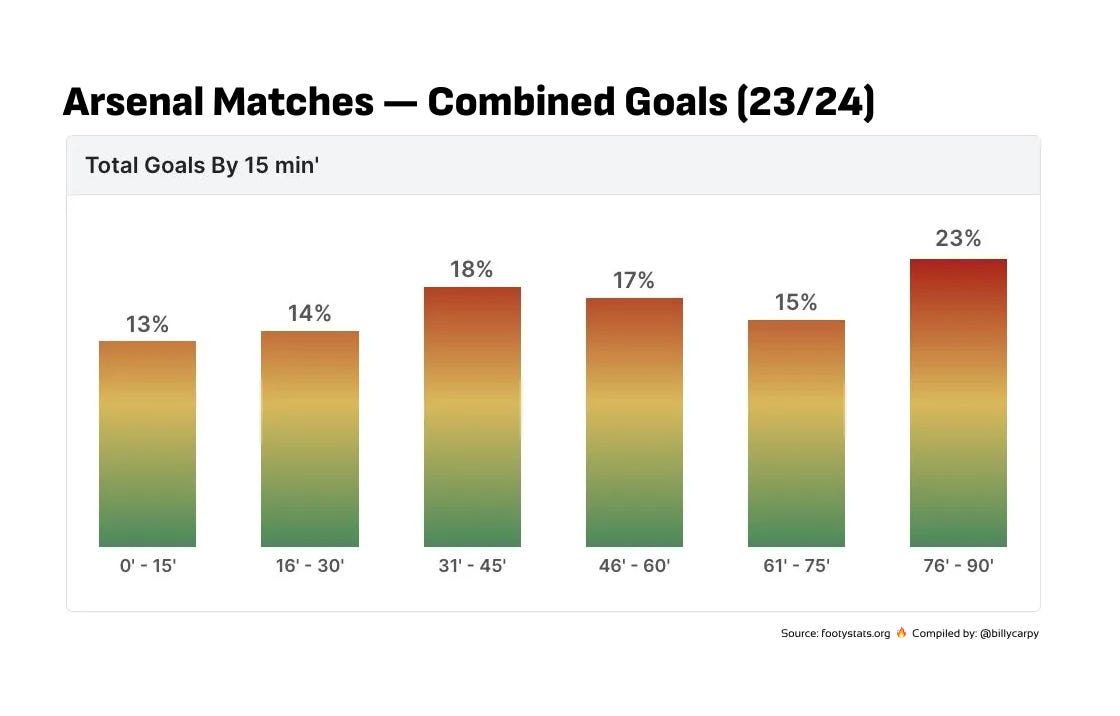

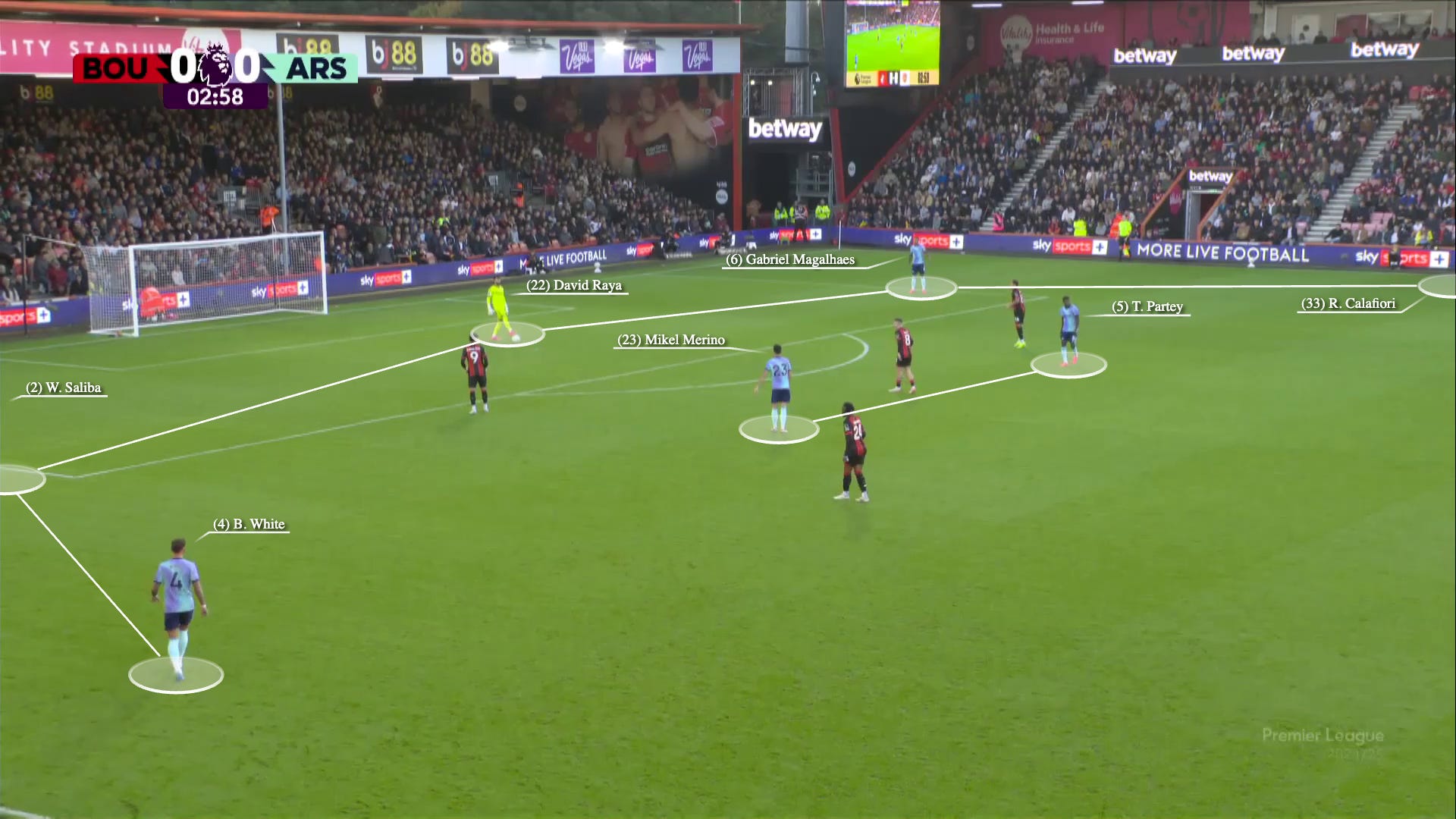

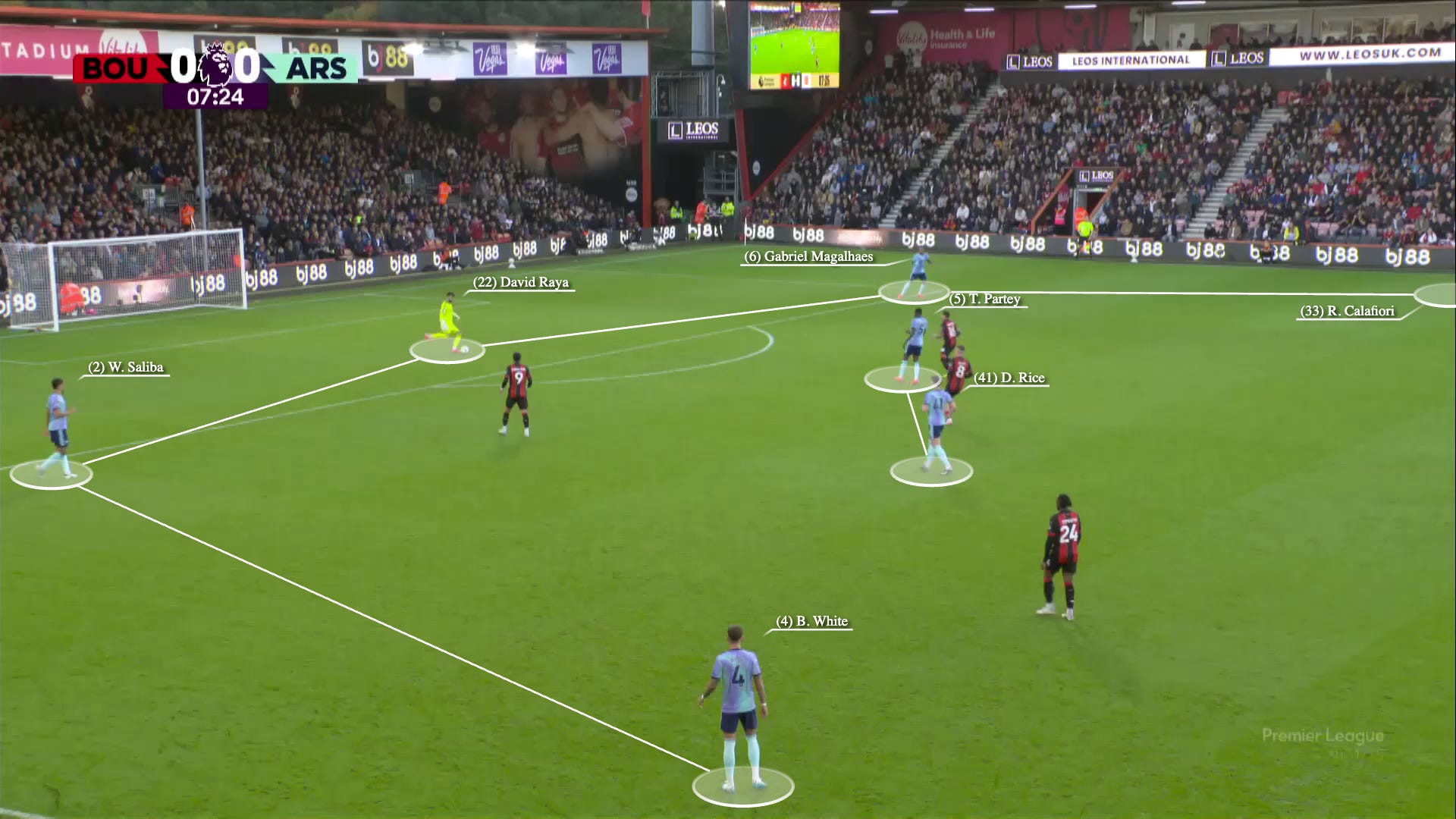


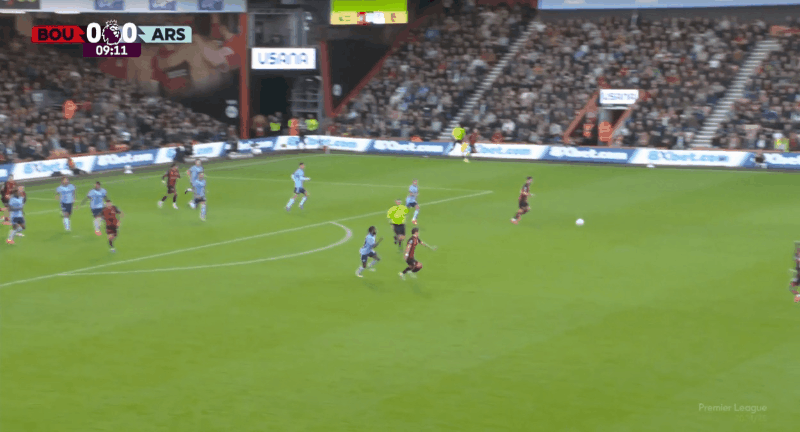



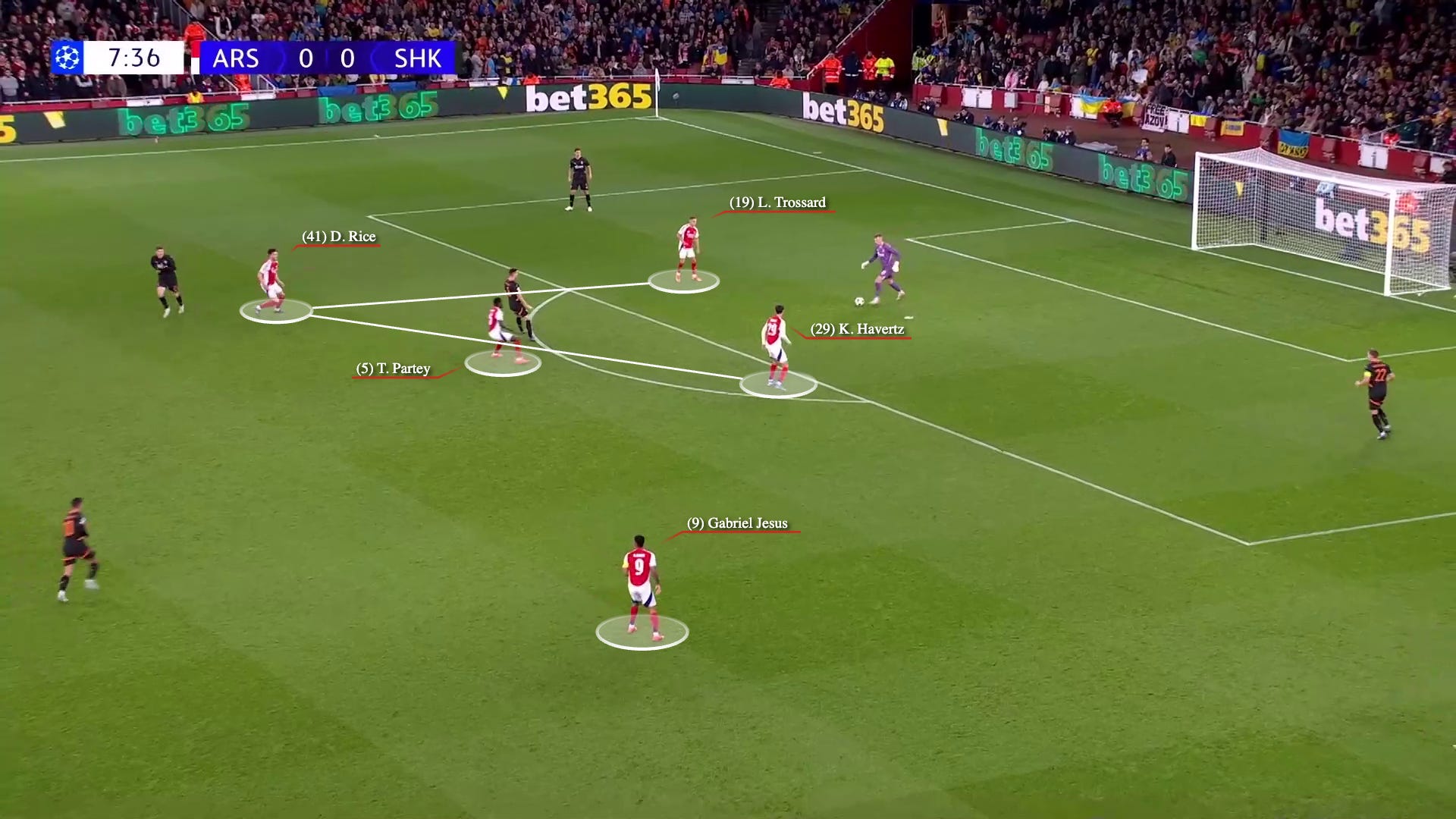

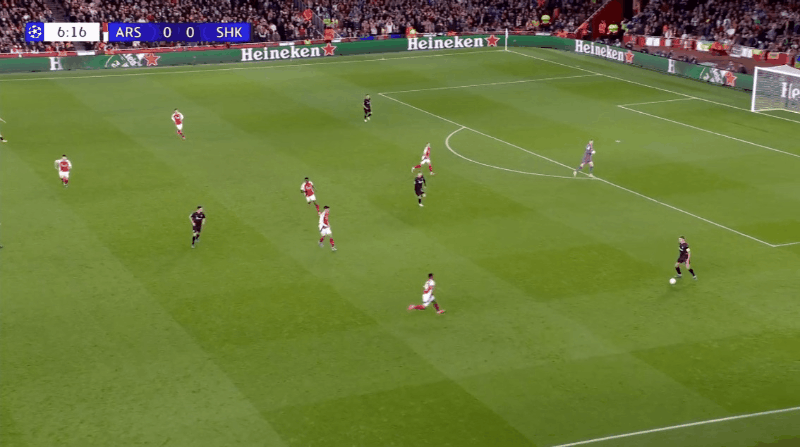
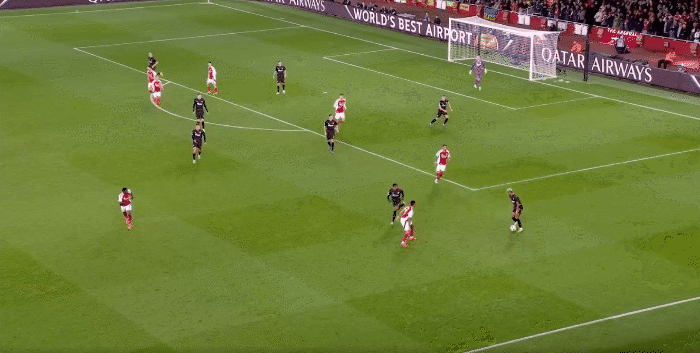


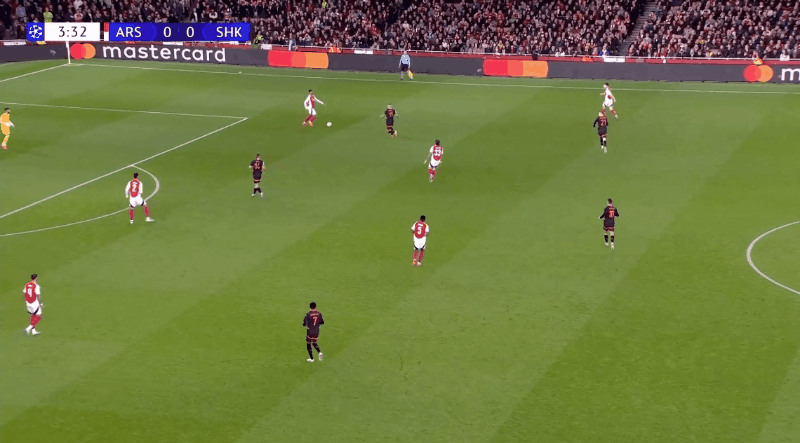
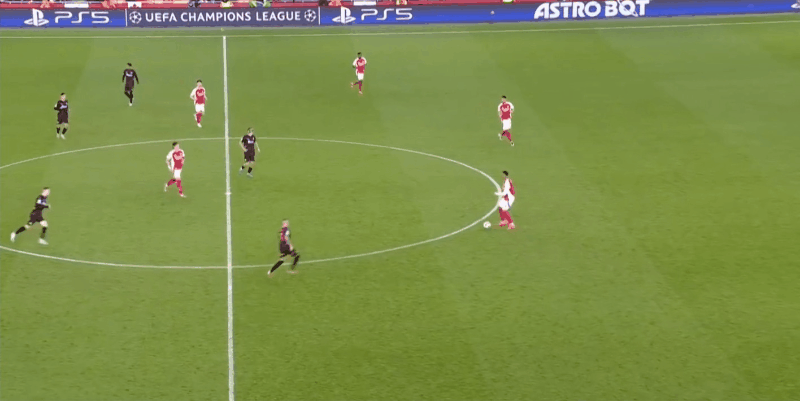




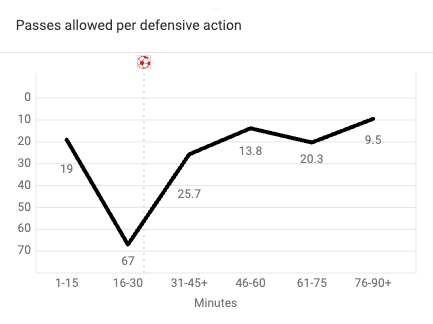


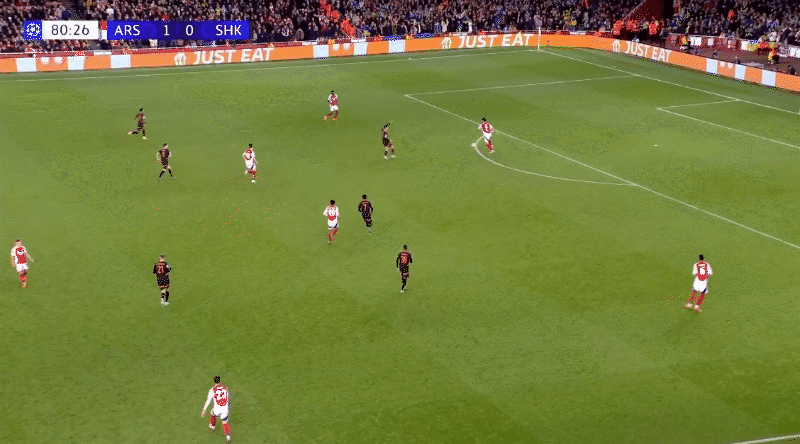


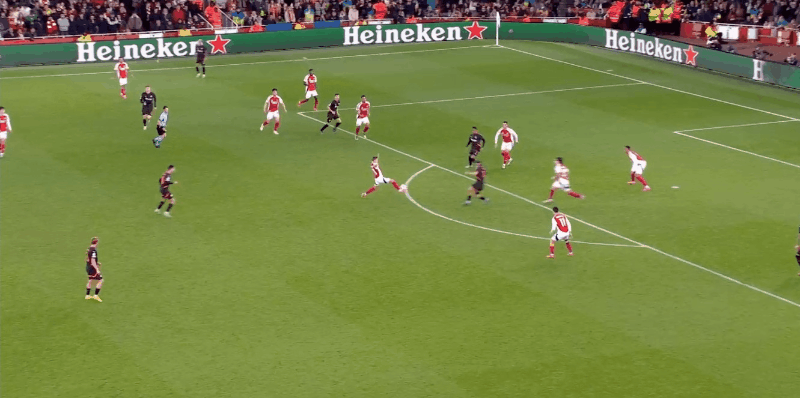
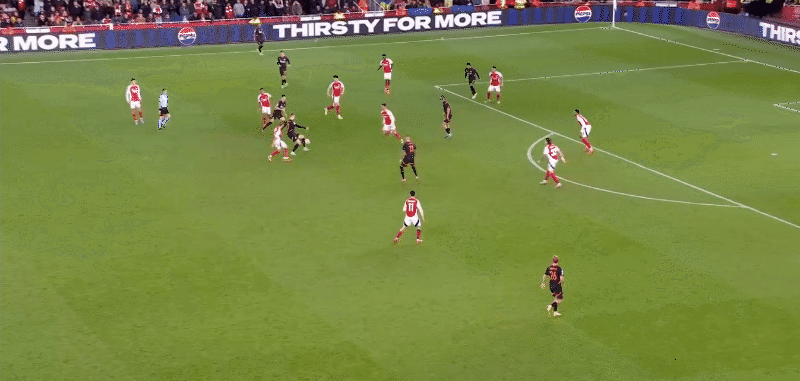







Thanks for the analysis and your thoughts. Earlier in the week I was really in a dark place over the last few matches, but now I’m pretty sanguine. It’s only October and we are missing several key players. I have been reminding myself that football is only the most important of the non-important things in life. 😀 Having been a supporter of this club for almost half a century gives one perspective. This bad vibes period too shall pass. Here’s to hopefully grabbing all the points tomorrow and sunnier days ahead for the Arsenal and all of us in the more important aspects of our lives. 🍻
Another brilliant piece, Billy. Thank you! One thought I had while watching was... are you concerned about what you saw from Ben White? I know his passing numbers looked good, but in those first 10 minutes he loses possession 4 times, one leading to a breakaway, and then nearly a 5th. Also fails to close down with any intent when the FB gets a run into our half on 15 minutes but still allows the pass inside, leads to a shot for them (blocked). Gets booked for a weird foul on Eguinaldo, a foul he didn't have to make, then he gets the halftime hook. Seems to be moving fine, matched his winger stride for stride. Work rate was fine. Just rust?